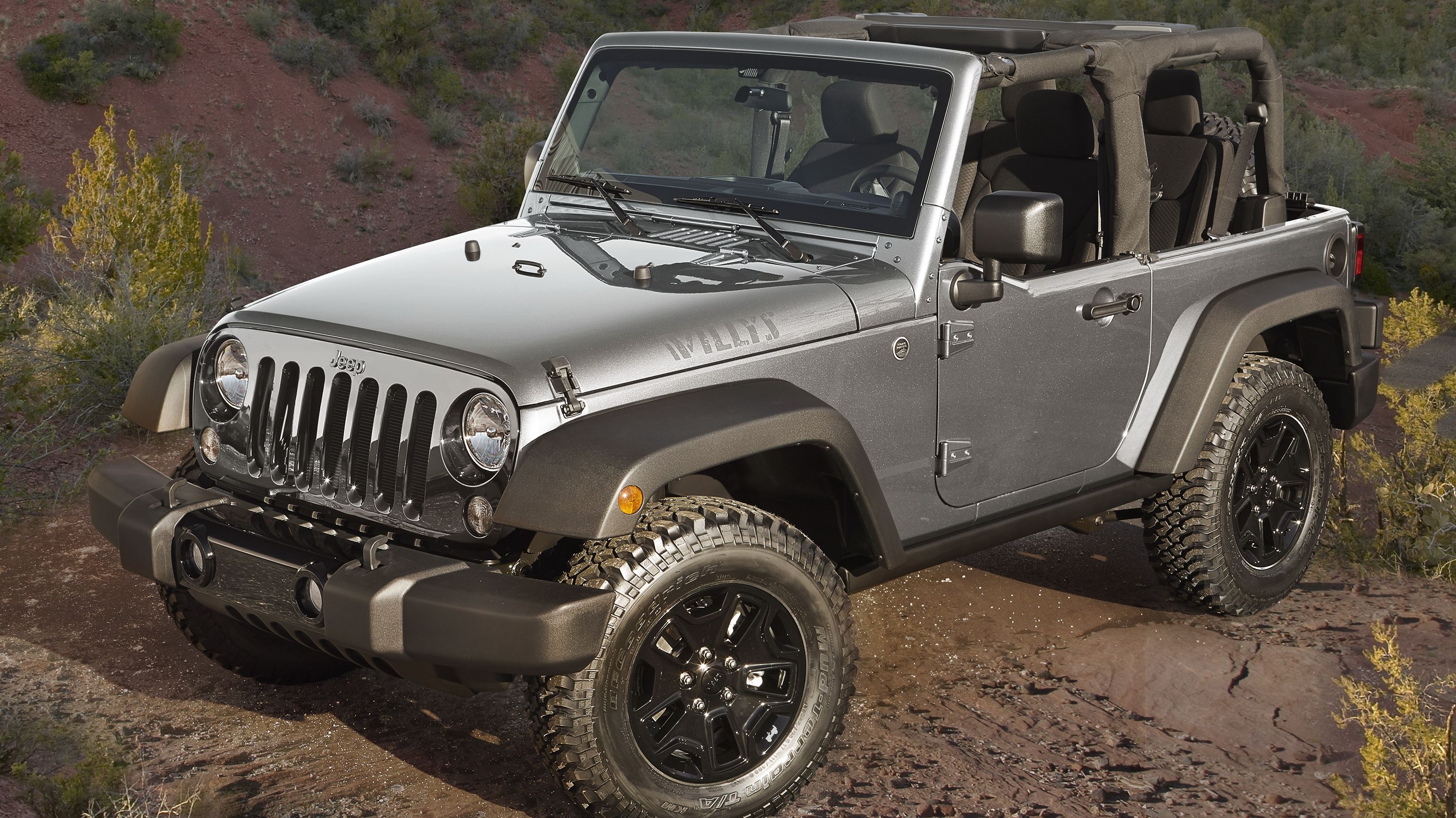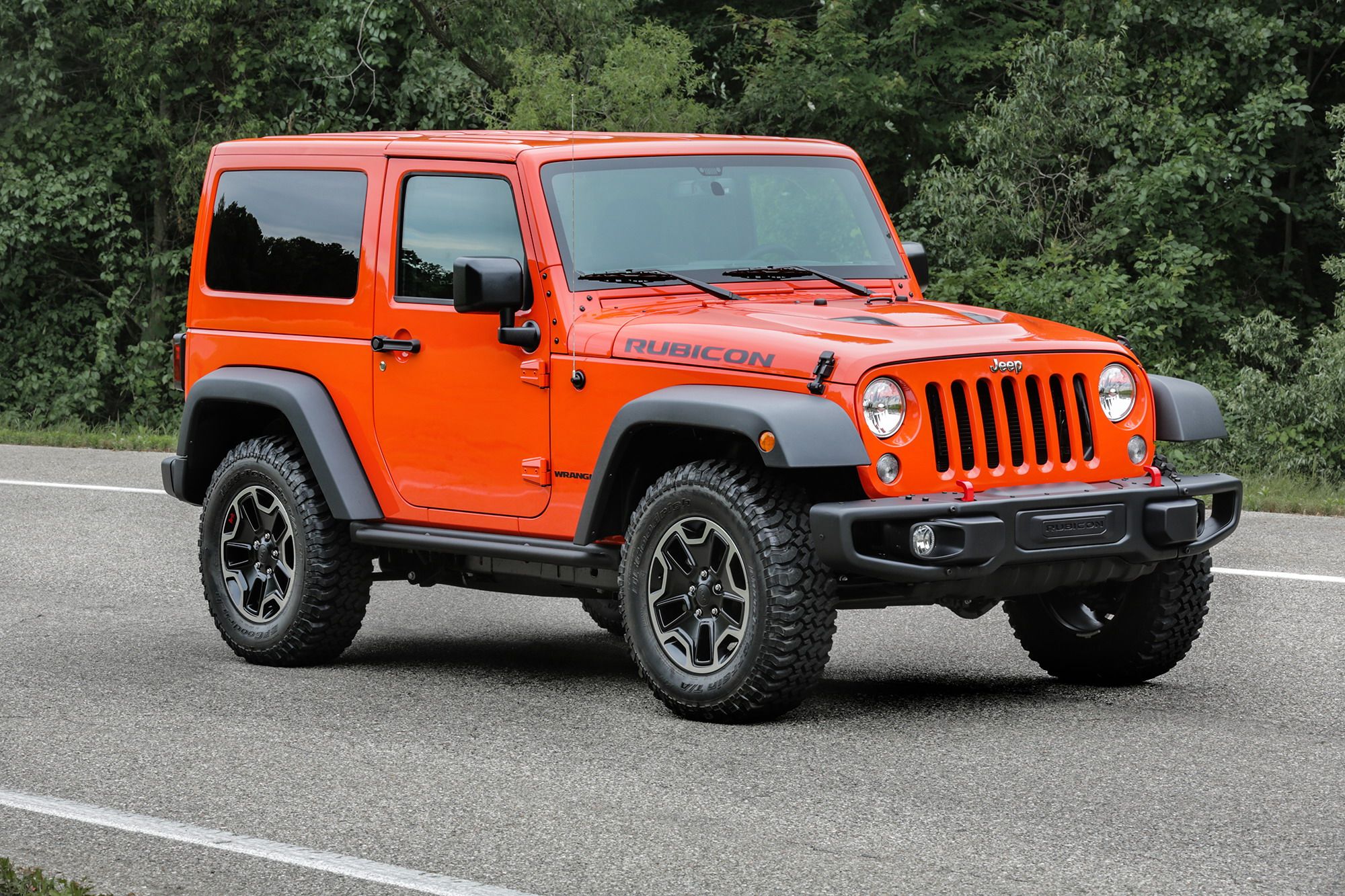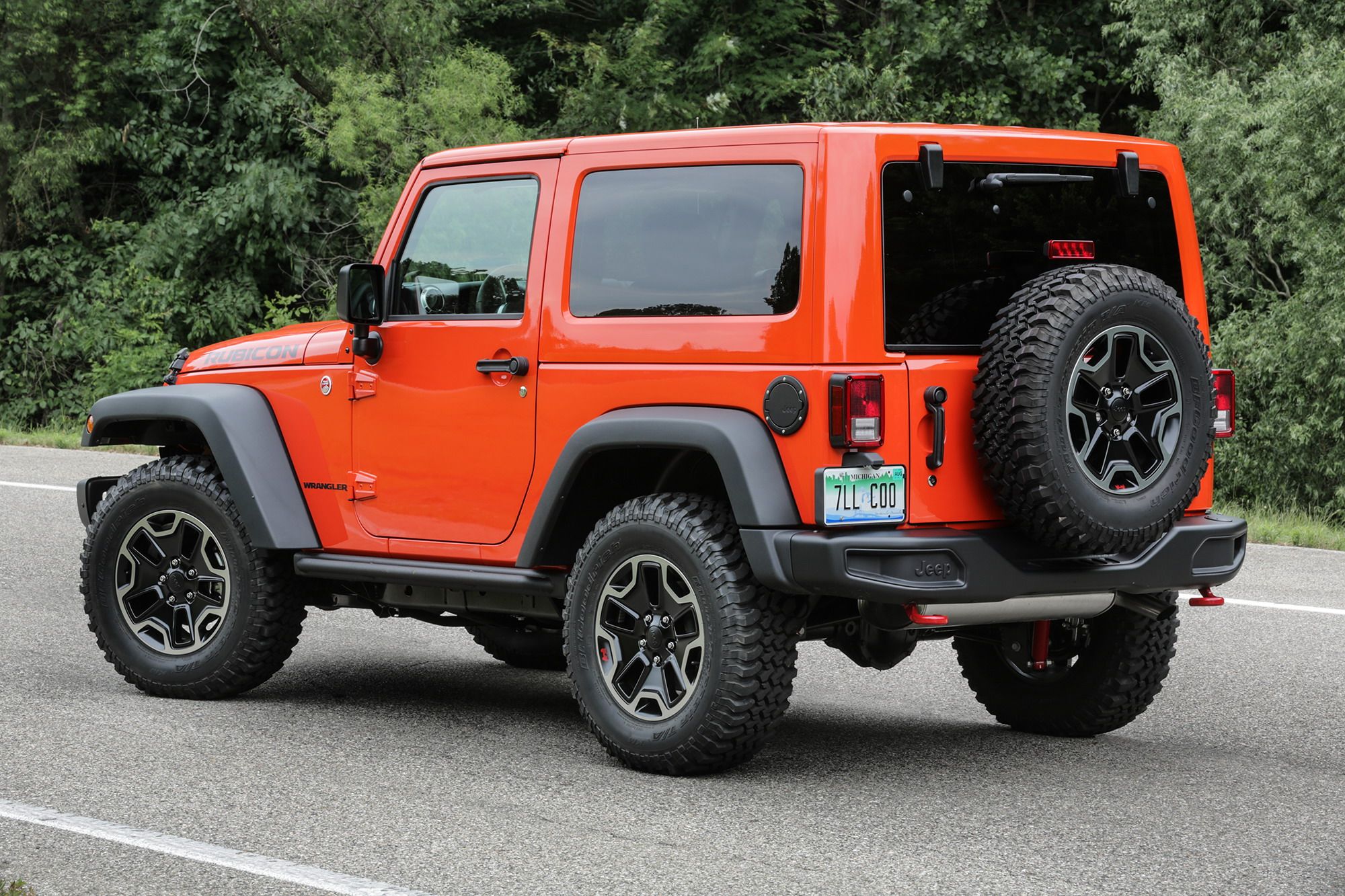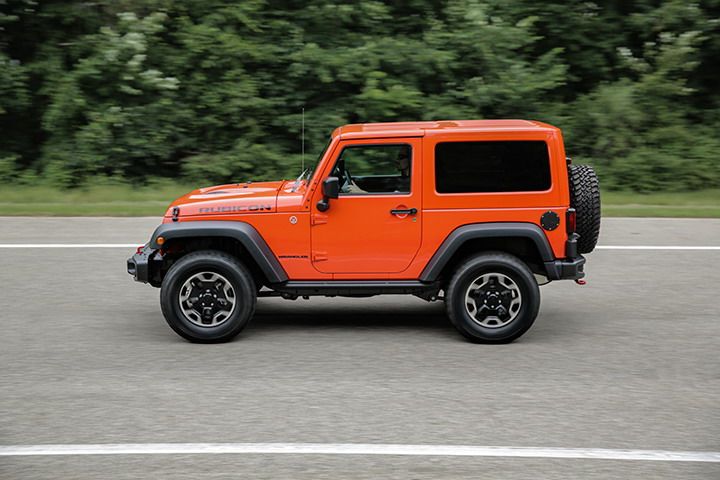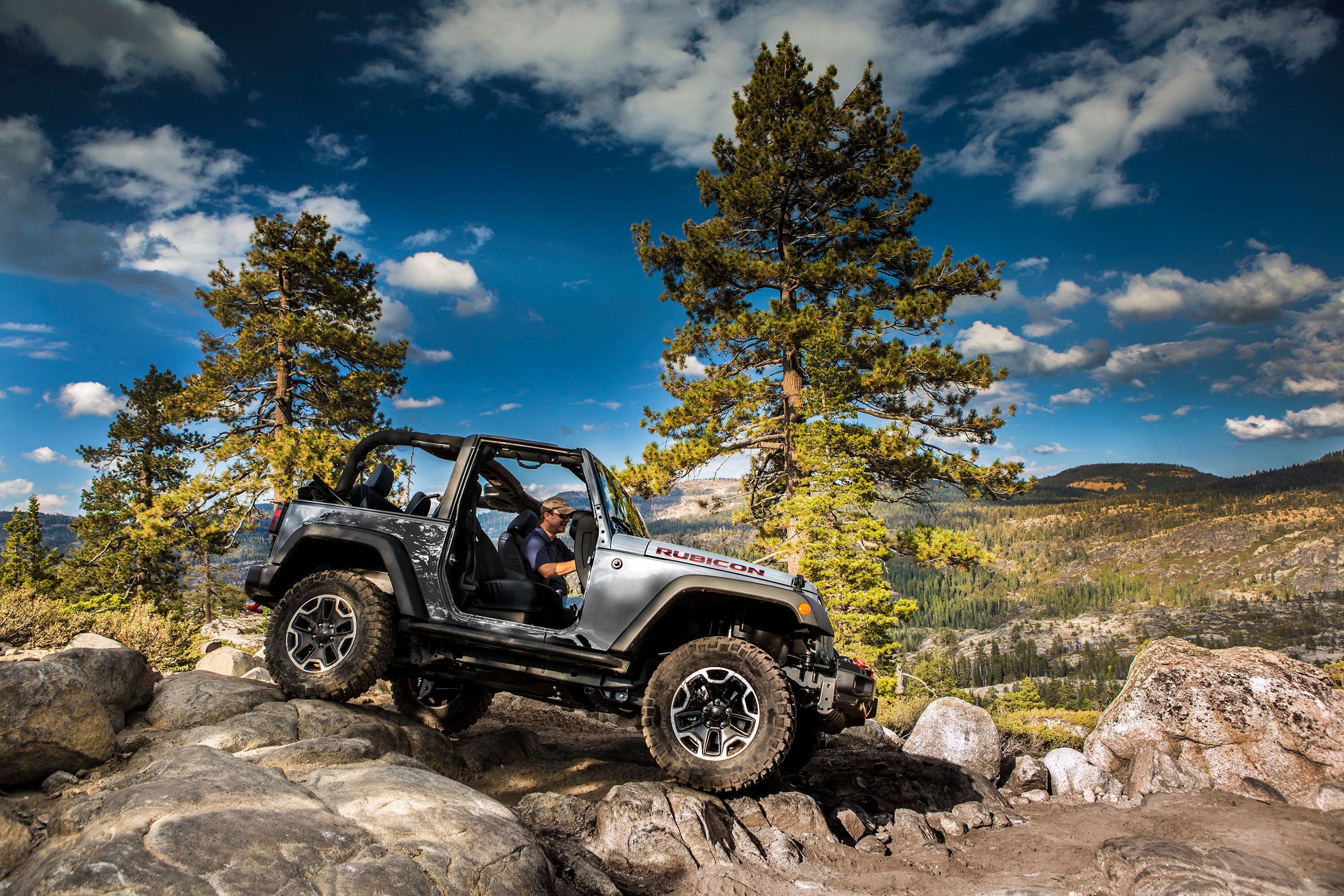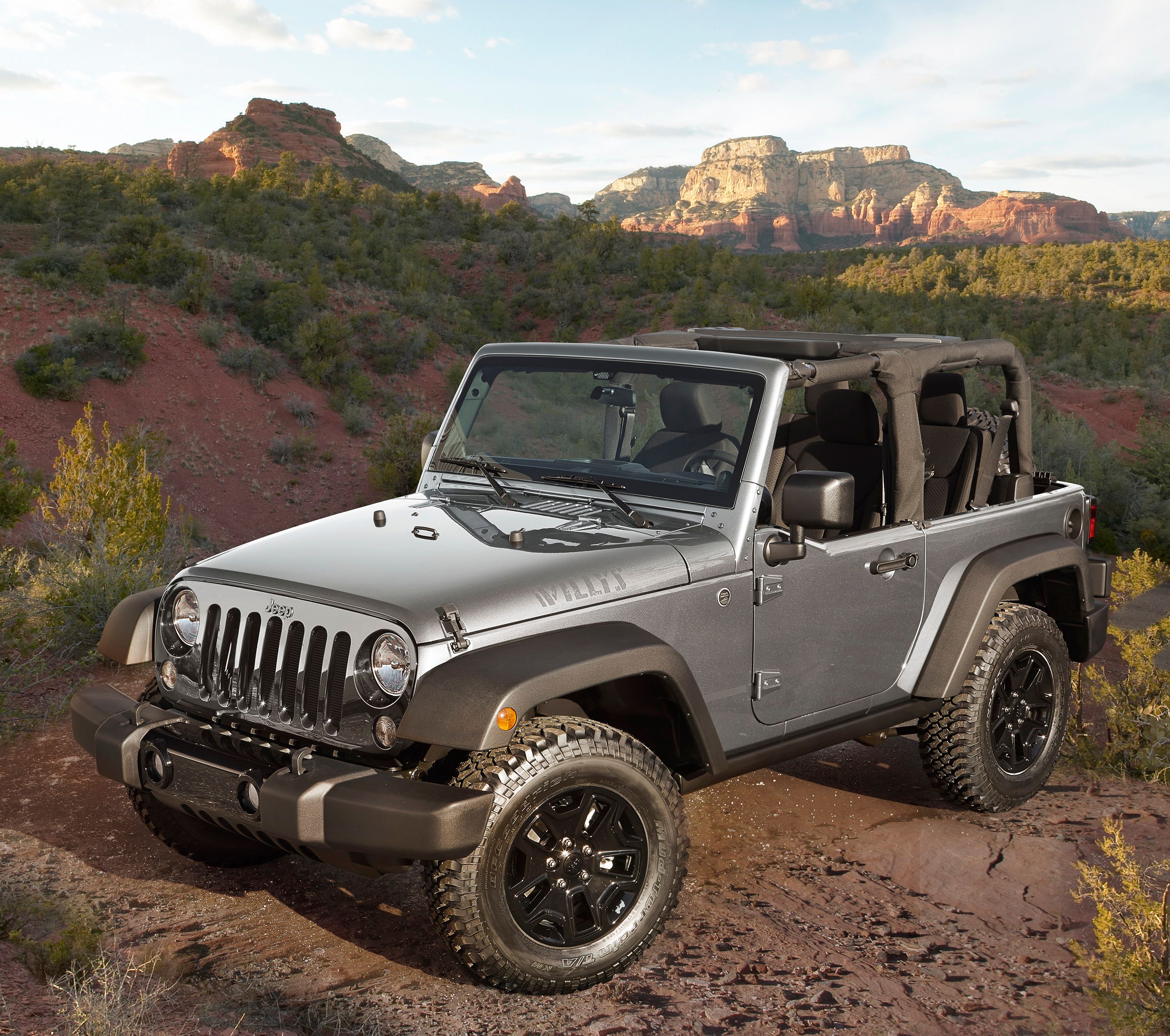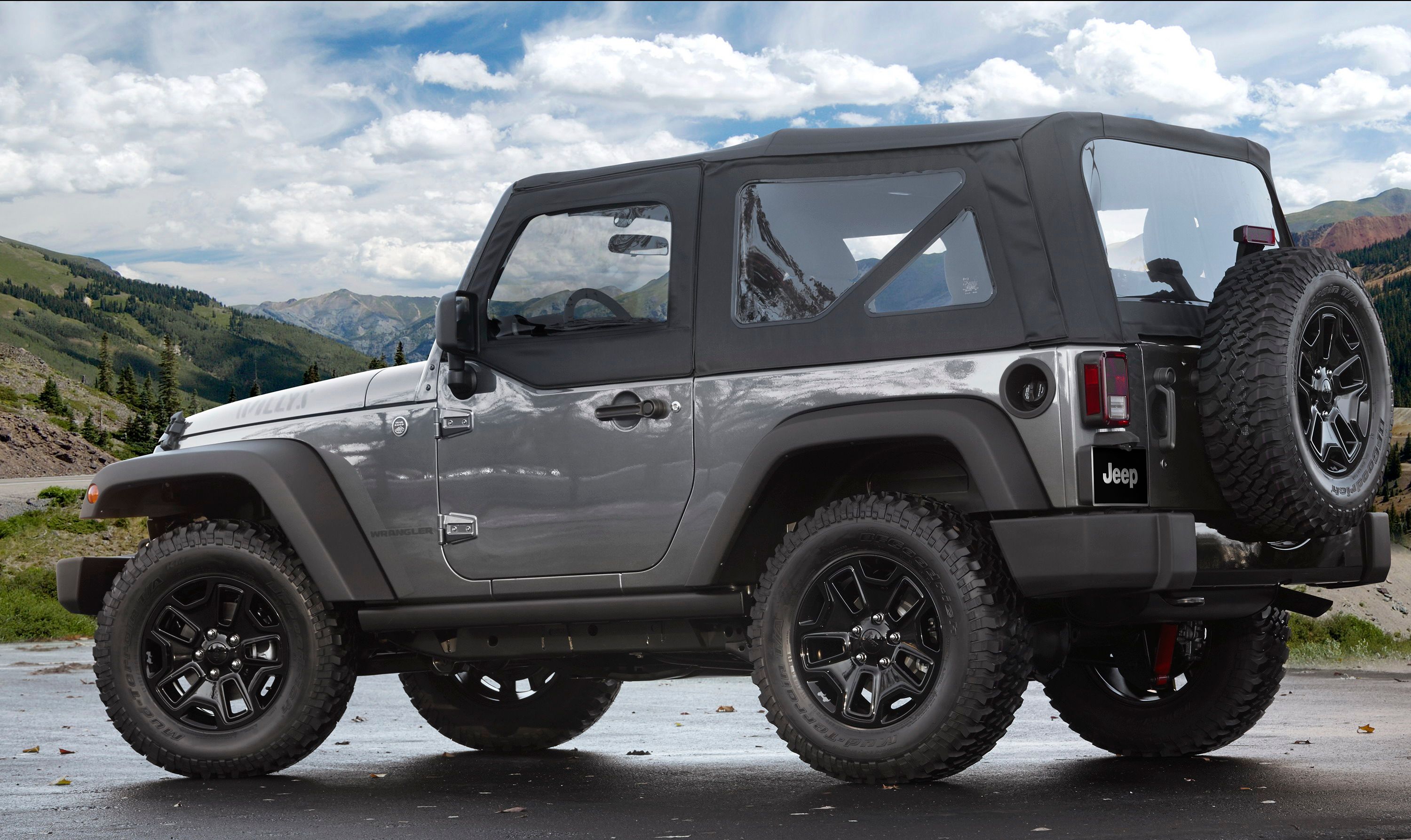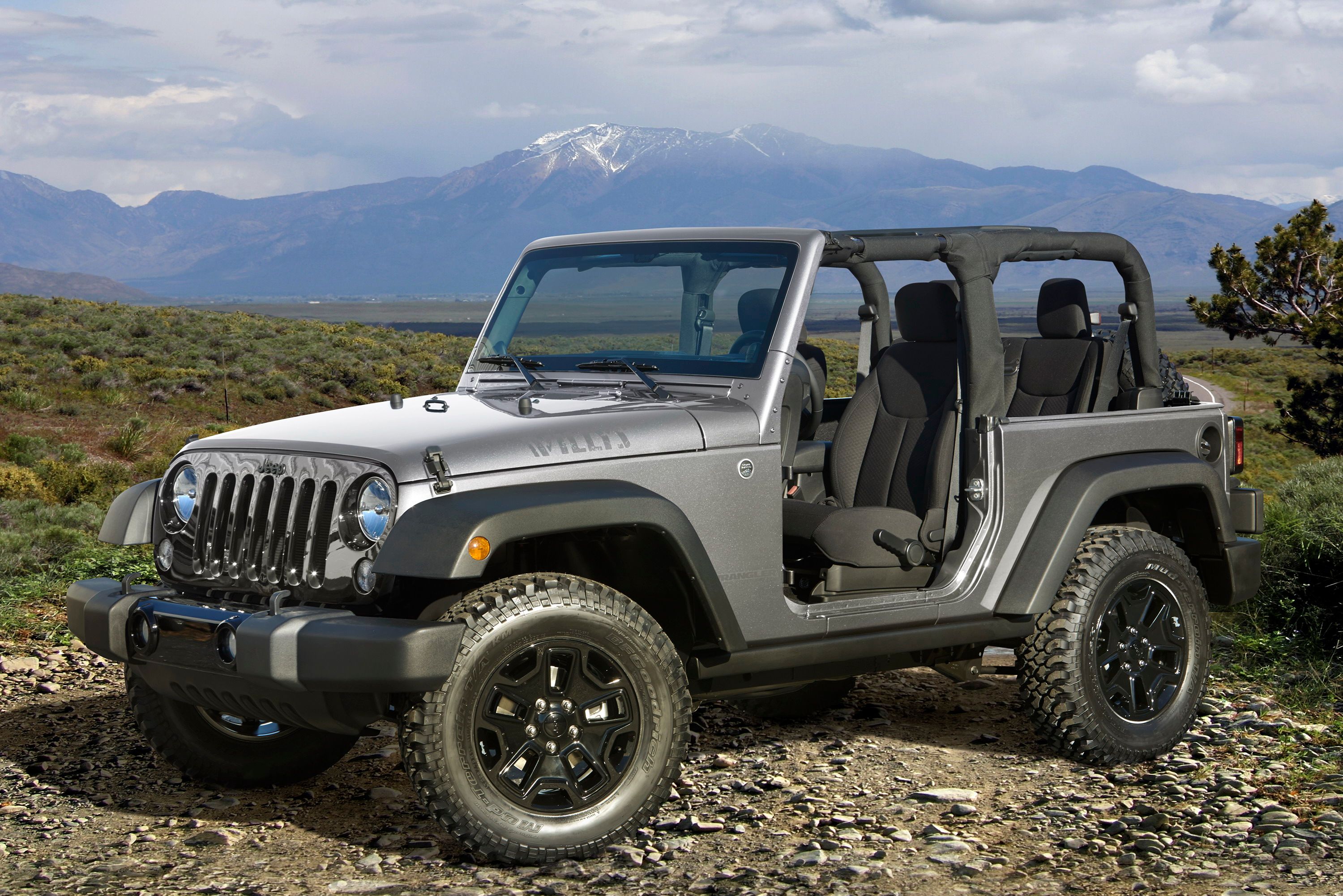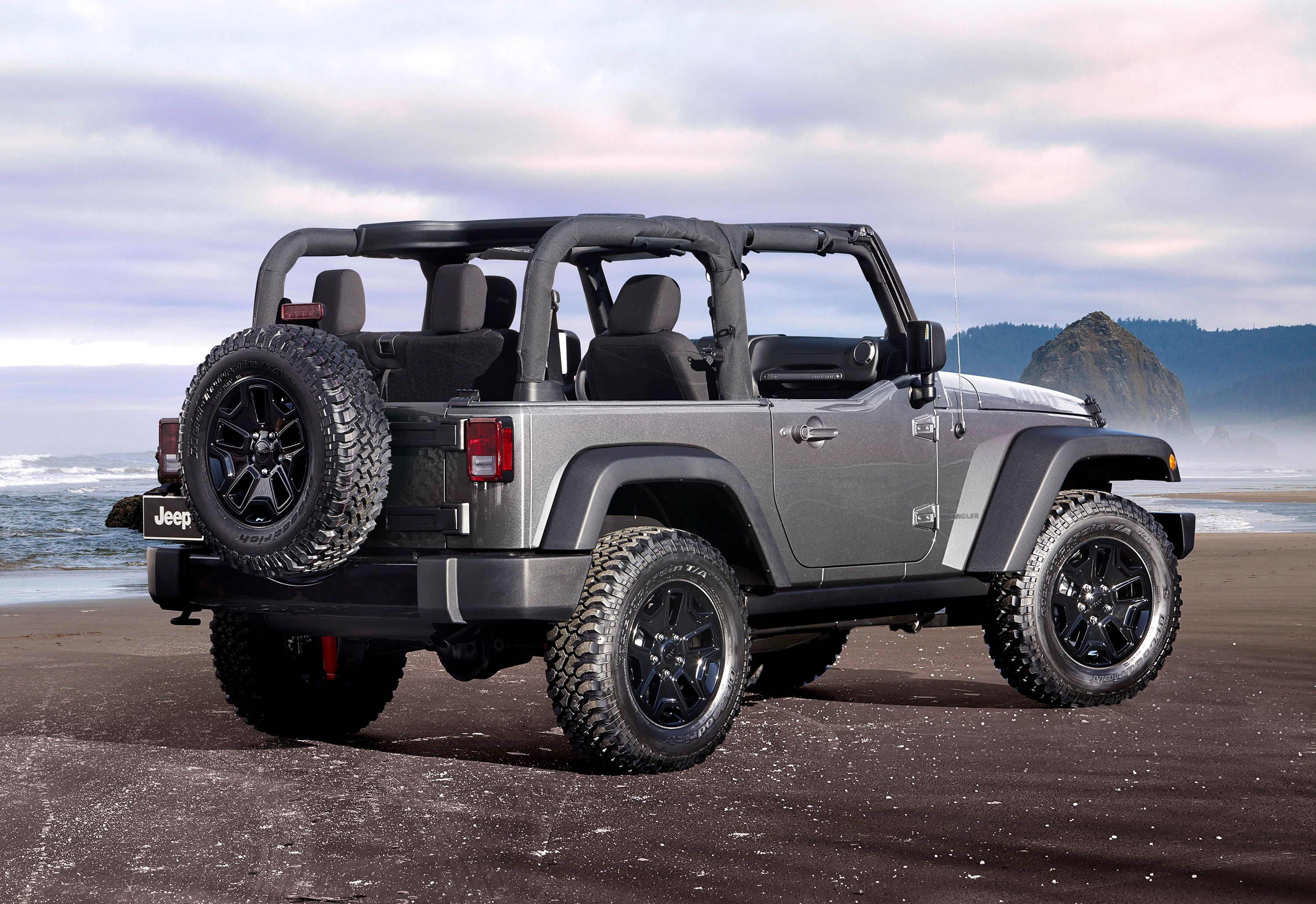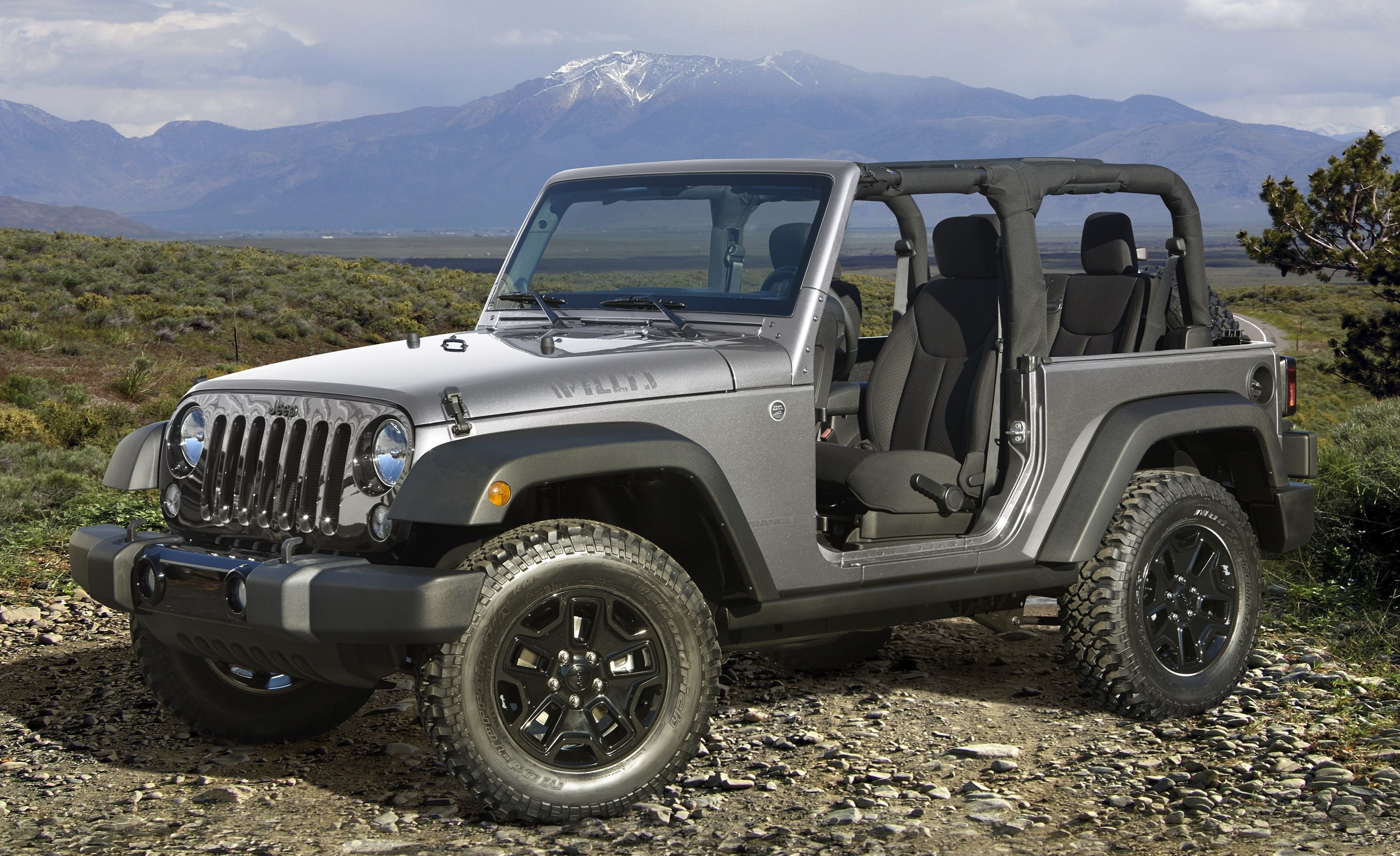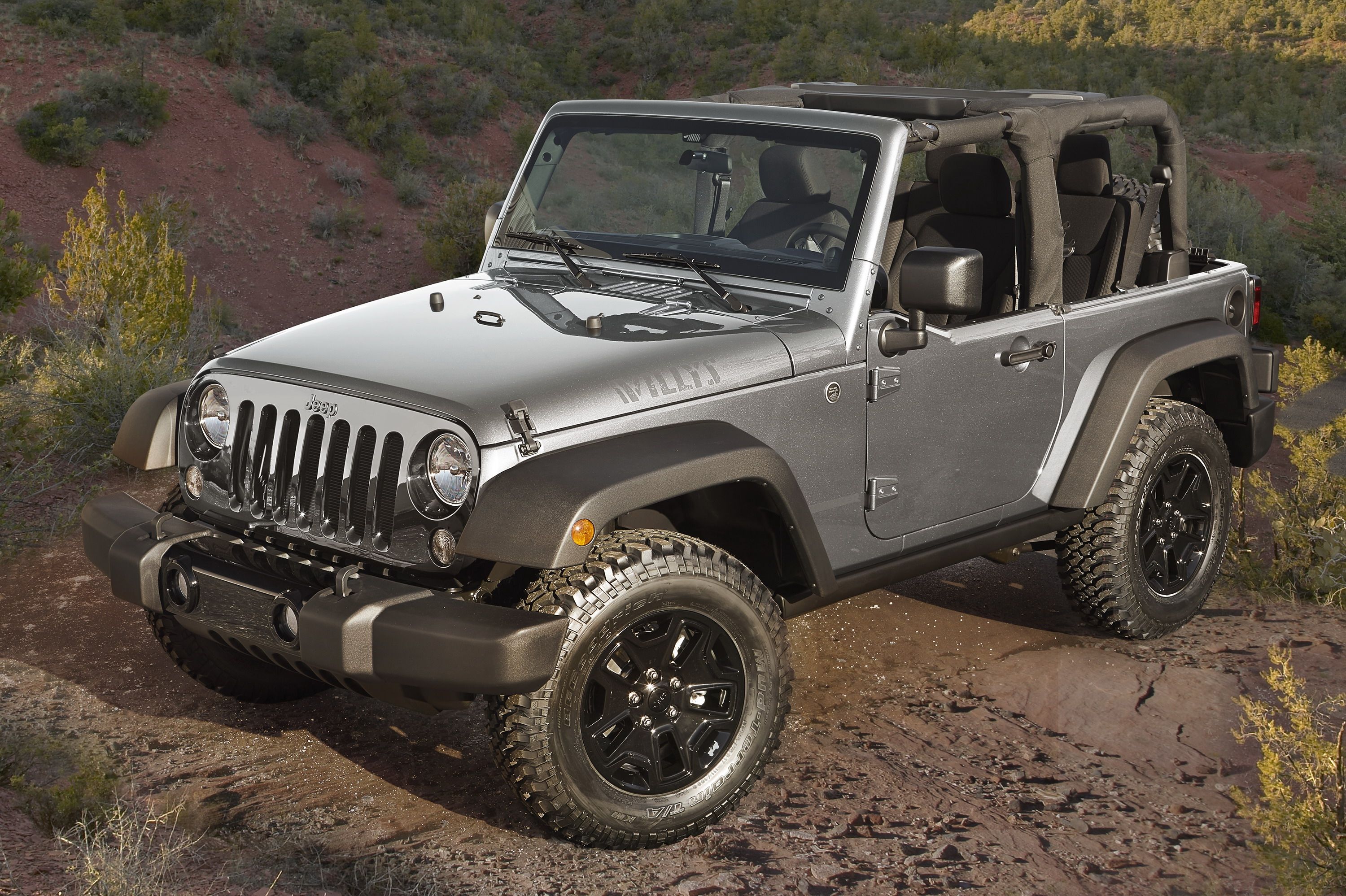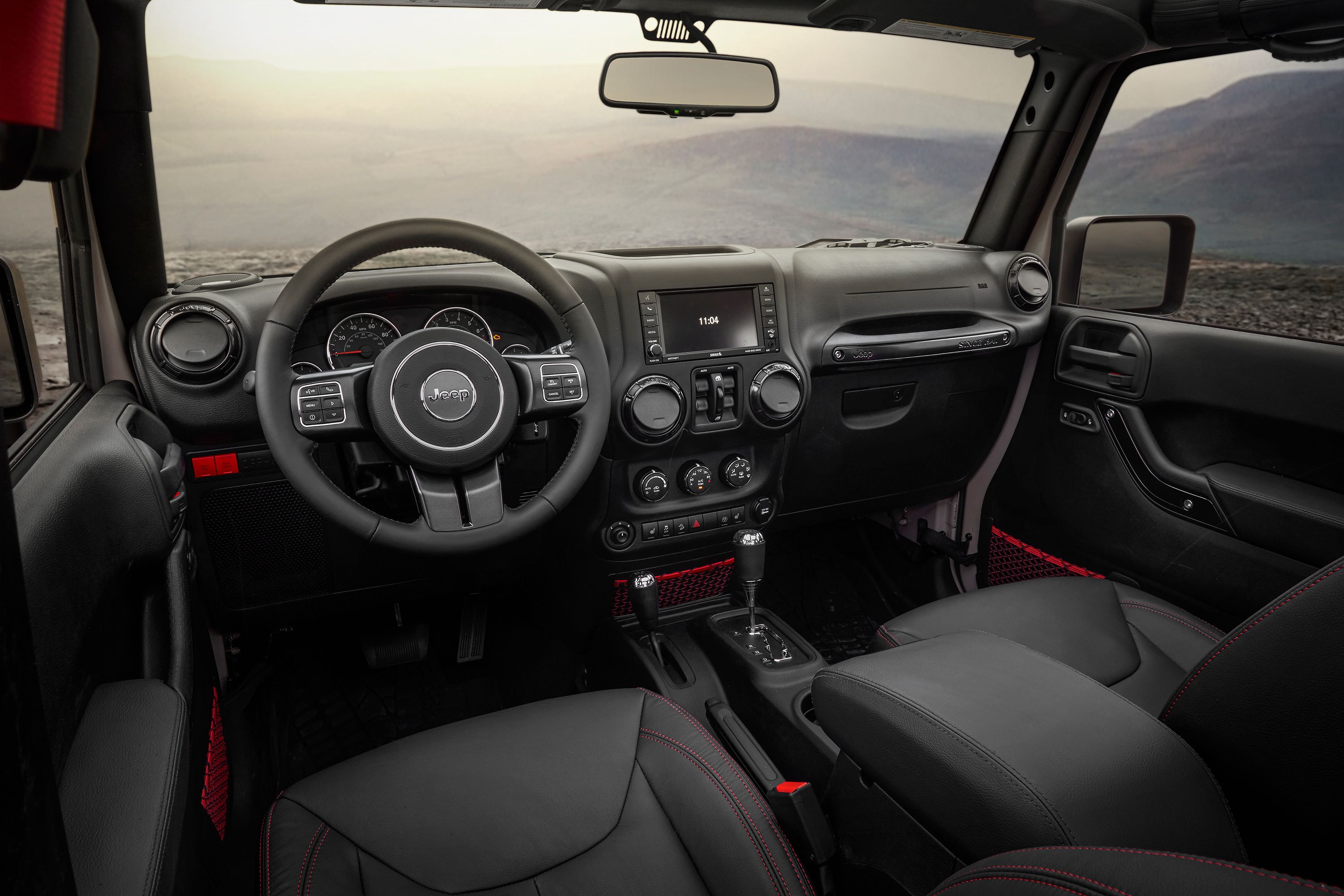The Jeep Wrangler JK is getting some minor tweaks for the 2017 model year, including some new LED headlights. These changes are somewhat of a last hurrah – a send-off before Jeep ushers in a new era of Wrangler in 2018. Don’t worry though, not much is changing for 2017, so you’ll have another full year before the highly anticipated JL comes to market.
In fact, most of the changes are more like optional extras. Those LED headlights don’t even come standard on the Sport and Sport S trims. Those lower-trimmed Wranglers have to be optioned with the updated lights. The Sahara and Rubicon models do come standard with the new lights, thanks to their higher ranking in the Wrangler hierarchy. Included with the LED headlight package are LED fog lights.
The other change is the availability of a new Cold Weather Group on the Sport S and Rubicon trims. It adds BF Goodrich KO2 tires on 17-inch wheels, an engine block heater, all-weather floor mats, heated seats, remote start, and the inclusion of the Power Convenience Group package.
In regards to the headlight upgrade, it was Jeep’s response to the Insurance Institute for Highway Safety’s recent report stating the Wrangler’s headlights were woefully inadequate. Instead of simply waiting to solve the problem with the 2018 Wrangler, FCA decided to address the issue now.
“Our commitment to improving safety is unwavering,” says Mike Dahl, Head of Vehicle Safety and Regulatory Compliance,” said Mike Dahl, FCA’s Head of Vehicle Safety and Regulatory Compliance. “Such lighting helps afford the driver a better view of the road ahead, the benefits of which are literally plain to see.”
But enough about the headlights for now. Let’s look at the vehicle as a whole.
Continue reading to learn more about the 2017 Jeep Wrangler.
2017 Jeep Wrangler
- Make: Array
- Model: 2017 Jeep Wrangler
- Engine/Motor: V6
- Horsepower: 285
- Torque: 260
- Transmission: six-speed manual
- [do not use] Vehicle Model: Array
Exterior
The Jeep Wrangler JK has kept its looks intact since it was introduced for the 2007 model year. That’s not a bad thing, really, since the whole Jeep brand focuses on its 75-year history. In that light, the iconic looks make since. Up front is the classic seven-slotted grille and round headlights and turn signals. Trapizoidal fender flairs keep mud and dirt contained around the tires. The flat windshield another piece of the Jeep legend, and it continues to be foldable flat against the hood. The doors are still removable, as are both hard- and soft-top options.
The Jeep rides on a fully-boxed ladder frame that’s visible when standing beside. The beefy frame rails have skid plates and optional rocker panel guards bolted firm, protecting the Wrangler’s critical parts from damage.
Part of the Wrangler JK’s massive success is its four-door variant, the Wrangler Unlimited. The JK was the first mass-produced four-door Wrangler built for the masses. Die-hard Jeep purists scoffed at the idea, but soon became won over by the Wrangler Unlimited impressive interior space and better on-road handling. The two-door Wrangler model is still a big seller, though not nearly as hot as the Unlimited.
Various pieces and parts change between the trim levels. Wheel and tire package are a big variance between the base Sport and the high-end Rubicon. When going cheap, the Sport comes with steel wheels wrapped in puny street-biased Goodyear tires with little fortitude for off-roading. Jeep probably anticipates most buyers in this category will spend money in the aftermarket getting bigger wheels and knobbier tires.
Bumpers are also a point of change. Most Wranglers come with a big plastic unit with fog lights mounted between low-impact crush cans. The bumper isn’t overly practical, but does offer tow hoods that protrude from the top. The Rubicon Hard Rock and a few other special edition trim levels come with a three-piece steel bumper. The center section is upgradable to house an electric recovery winch and the sides are removable for an improved approach angle. Corresponding rear bumpers carry the theme out back.
Jeep offers two versions of the soft top: the basic vinyl top and the premium Sunrider cloth top. The Sunrider offers a foldable section over the front occupants, acting like a sunroof. Besides this feature, the top can be completely lowered and stored behind the rear seats in the matter of minutes. The same holds true for the standard top. A hard top is optional for those who want more insulation from the outside world. Called the Freedom Top, the top comes in three pieces: the main piece that covers the rear of the Jeep and two panels that cover the front passengers. These plastic panels can be removed and stored in the back for open-air driving.
Now on those new headlights, FCA says the highbeams are 90 percent brighter than the halogen units from 2016. Low beam output is improved by 63 percent. And typical of LED lights, these headlights use 67 percent less power than the outgoing halogen lights.
Three new colors are available for 2017. They include Chief, Acid Yellow, and Gobi. These colors join the carry-over colors from 2016. These include Billet Silver, Black, Bright White, Firecracker Red, Granite Crystal, and Rhino.
Interior
Note: 2012 Jeep Wrangler interior shown here.
The Wrangler JK’s interior saw massive improvements for the 2012 model year. This same interior carries over for 2017 unchanged. And even in these modern times when vehicles offer more interior comforts than a La-Z-Boy showroom, the Wrangler’s interior can be washed out with a garden hose. Yep, the carpet is removable to reveal the steel body tub, complete with removable drain plugs. All the electronics are protected from moderate moisture and the occasional rain cloud.
The gauge cluster hosts two main analog dials for speed and engine revs. A small driver information screen below the speedometer shows stuff like mileage, tripometer, fuel consumption, and tire pressure. At this point, it definitely looks a decade old. The infotainment options are showing their age just a badly. The stock radio looks like it came from an early 2000s car, while the “premium” Uconnect system is a couple generations old. This isn’t the well-loved 8.4-inch Uconnect, but rather the 430N system with a 6.5-inch screen and an unlovable software program. Jeep still charges $1,195 for the upgrade.
The two-door Wrangler offers seating for four thanks to its second row bench seat. Entry is gained by sliding the front passenger seat forward, just as in any two-door, 2+2 coupe. The bench is removable if hauling cargo is needed. The four-door Wrangler offers a full-size second row bench with seating for three. This pushes passenger capacity to five. Honest rear doors give easy access to the second row, making the Wrangler Unlimited a decent choice for families. What’s more, the rear seat folds flat, like in many other SUVs, allowing for a full load space without having to leave the seat at home. Standard cloth covers the seats on all but the Sahara and Rubicon trims. Leather is optional in the Sahara and standard in the Rubicon.
Drivetrain
Powering the Wrangler is the venerable 3.6-liter Pentastar V-6 It’s been in the Wrangler since 2013 and produces 285 horsepower and 260 pound-feet of torque. Though it’s not a powerhouse, the V-6 is definitely adequate for pushing the Wrangler around town and up a mountain hillside. It comes mated to two transmission options: the standard six-speed manual and the optional five-speed automatic. While most urbanites will opt for the automatic, the enthusiast set will go with the manual.
The Wrangler rides on two solid axels held in place by multi-link suspension systems. Coil springs and monotobe shock absorbers cushion the ride. Non Rubicon models use a Dana 30 front axle combined with a Dana 44 axle out back. Power is always sent rearward, but when the going gets tough, the Command-Trac part-time, two-speed, manually operated transfer case will send power forward to the front differential. A 2.72:1 low-range crawl ratio is plenty fine for most off-road situations. An optional Trac-Lok limited-slip rear differential helps provide extra traction in slippery conditions.
The off-road oriented Rubicon ups the ante by several degrees. It comes with the stronger Dana 44 axles in both front and rear positions, along with a lower crawl ratio in its Rock-Trac part-time transfer case of 4.0:1. This leverages the beefier BFGoodrich Mud-Terrain T/A KO2 tires to their fullest. When things get really sticky, the Rubicon has front and rear electronic locking differentials, making all four wheels turn at the same speed. This eliminates the potential for wheel slippage to send power for the wheel with the least amount of grip.
Though the Wrangler relies on mostly old-school, proven off-road technology, Jeep engineers have kept it modern and safe with driver aids like electronic stability control, electronic roll mitigation and trailer-sway control. Hill-start assist and brake traction control further help the Wrangler in slippery conditions.
Prices
Jeep has not released pricing for the 2017 model year, but we suspect it will follow closely with the 2016 pricing schedule. There will be a slight premium paid for the new LED headlights, but it shouldn’t be over $500.
Currently, the 2016 Wrangler starts at $23,985 for the base Sport model in two-door form. Opt for the four-door, and the base pricing increases to $27,695. A fully optioned 2016 Rubicon Unlimited can crest just over the $50,000 mark.
Competition
Toyota 4Runner
The Toyota 4Runner is just about the only other body-on-frame SUVs in American that can actually hold its own off the beaten path. Unlike the Jeep, however, the 4Runner uses an independent front suspension to help improve on-road driving. A solid rear axle with a multi-link suspension system keeps the ruggedness alive.
The 4Runner is powered by Toyota’s venerable 4.0-liter V-6 making 270 horsepower and 278 pound-feet of torque. A five-speed automatic transmission does the shifting, while two different optional 4WD systems allow customers to choose what sort of system they want. Available on the SR5 and Trail models, a manually operated transfer case operates like the Jeep’s – the driver has to do the shifting. The Limited trim has a full-time 4WD system that sends power to whatever wheel needs the power.
Pricing for the 4Runner starts at $34,010 and crests around $45,000 for a wel-optioned Limited model. Those wanting the most capable 4Runner should look no further than the TRD Pro trim, with its beefed-up suspension, bigger tires, skid plates, and part-time 4WD system.
Find out more about the Toyota 4Runner here.
Conclusion
The 2017 Jeep Wrangler is one of the last hold-outs in the traditional SUV category. A body-on-frame design with twin solid axles, and a manually operated, two-speed transfer case is just about unheard of in modern times. FCA knows this and realizes it’s part of the Wrangler and Wrangler Unlimited success story. We’ve already been promised the next-generation Wrangler, the JL, will continue many of these traditions while moving further towards improved on-road feel, better fuel economy, and increased passenger safety. For that, we’re happy.
But until the next-generation Wrangler hits showrooms, we’ve got plenty to be content with thanks to the well-rounded Wrangler JK – even if it’s a decade old.

